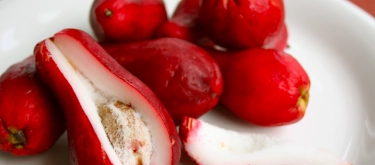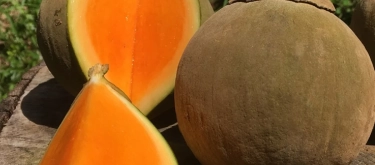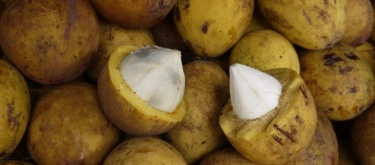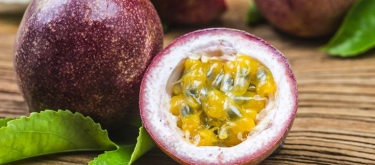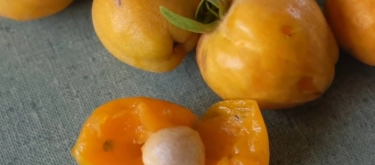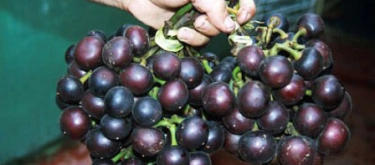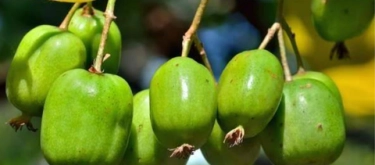Passiflora maliformis (Sweet Granadilla): Taste Profile, Aroma, Benefits and Health Risks
Passiflora maliformis, commonly known as Sweet Granadilla, is a tropical fruit native to the lush rainforests of South America. Traditionally valued by indigenous communities for its distinctive flavor and medicinal properties, its unique taste and vibrant appearance have attracted global interest. Today, Sweet Granadilla is celebrated in gourmet recipes and fresh fruit platters, offering both nutritional benefits and an exotic culinary twist.
Passiflora maliformis fruits are naturally vegan, gluten-free, and rich in vitamins and antioxidants. They are generally non-allergenic; however, as with all exotic fruits, individuals with sensitivities should introduce them gradually.
What does Passiflora maliformis (Sweet Granadilla) taste like?
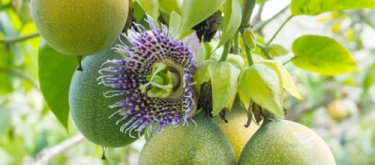
Complete Sensory Description
Taste
The fruit presents a beautifully balanced profile: a rich, natural sweetness intermingles with a subtle tang reminiscent of tropical citrus. Its flavor unfolds with layers of honeyed nectar, hints of guava and pineapple, and delicate floral notes that impart an almost perfumed quality. A whisper of mild acidity adds brightness, ensuring the sweetness never overwhelms the palate.
Aroma
Fresh Sweet Granadilla emits a vibrant, tropical fragrance with a burst of citrus and floral undertones. The aroma is intensely fresh, driven by volatile esters and terpenes such as limonene and linalool, evoking the scent of a sunlit rainforest. This inviting fragrance heightens as the fruit ripens, contributing to its overall sensory appeal.
Texture
The pulp is exquisitely juicy and soft, yet it maintains a gentle, slightly pulpy structure. Tiny, crunchy seeds provide a pleasant textural contrast, reminiscent of traditional passionfruit. The smooth, almost silky consistency of the flesh contrasts with the firm, glossy skin, making each bite a delightful interplay of juiciness and subtle crunch.
Appearance
Sweet Granadilla typically displays an oval to round shape with smooth, brightly colored skin ranging from yellow to orange. The interior is a radiant amber or bright yellow, speckled with numerous small, crunchy seeds that create an attractive mosaic-like pattern, enhancing its exotic presentation.
In-depth Flavor Analysis
The unique flavor of Passiflora maliformis is a result of a complex interplay among sugars, organic acids, and aromatic compounds. High levels of fructose and sucrose deliver its characteristic sweetness, while malic acid contributes a mild, refreshing tartness that balances the sugary notes. Volatile compounds—such as limonene, linalool, and various esters—are responsible for its vivid tropical and floral nuances. These compounds, released from the zest and pulp during ripening, create a multi-dimensional flavor profile that shifts subtly with ripeness: under-ripe fruits exhibit a more pronounced tartness and vegetal character, whereas fully ripe fruits offer an intensified, almost custard-like sweetness with hints of tropical and floral accents. Environmental factors like sunlight, soil composition, and water availability further modulate these molecular interactions, resulting in a fruit whose flavor can vary from delicately sweet to richly aromatic.
Varieties and Culinary Applications
Varieties
While Passiflora maliformis is less commercialized than its relative Passiflora edulis, local variations exist:
- Slightly Tart Variant: Exhibits a brighter acidity paired with moderate sweetness, ideal for refreshing, tangy preparations.
- Extra-Sweet Variant: Characterized by deeper honeyed notes and a softer, almost custard-like texture, perfect for desserts and preserves.
Culinary Applications
- Fresh Consumption: Enjoy sliced directly from the skin to relish its natural tropical sweetness and refreshing tang.
- Desserts & Baked Goods: Use in cakes, tarts, sorbets, or puddings where its aromatic complexity and lush texture elevate sweet treats.
- Preserves & Sauces: Cook into jams, jellies, or chutneys; gentle simmering mellows any astringency and enhances natural sweetness.
- Beverages: Blend into smoothies, juices, or tropical cocktails to infuse drinks with vibrant flavor and nutritional benefits.
- Savory Dishes: Reduce into glazes or sauces for poultry, seafood, or pork to add a unique tropical twist with balanced acidity and sweetness.
Selection and Storage
Selecting Quality Fruits
- Opt for fruits that yield slightly to gentle pressure at the stem, indicating optimal ripeness without being mushy.
- The skin should be smooth, brightly colored (yellow to orange), free of blemishes, and emit a fresh, inviting tropical aroma.
Storage Recommendations
- Allow fruits to ripen at room temperature until they soften slightly, then refrigerate at 2–4°C (35–39°F) to maintain peak flavor for up to one week.
- For long-term storage, remove the pulp and freeze it in airtight containers for up to 2–3 months, preserving both flavor and nutritional value.
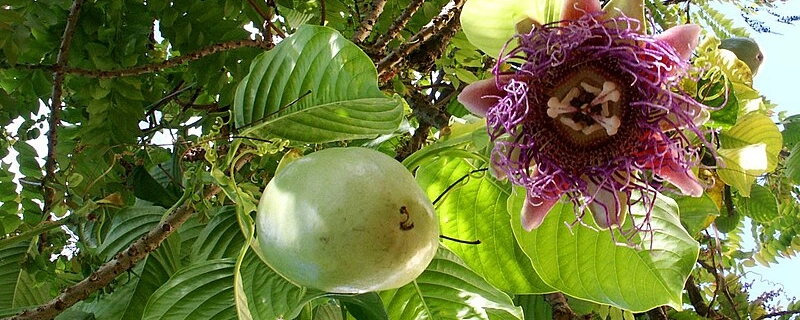
Nutritional Insights
- Rich in Vitamin C & Antioxidants:
Provides a high dose of vitamin C and a variety of antioxidants that boost immune function, aid collagen synthesis, and protect against oxidative stress. - Dietary Fiber:
High fiber content promotes digestive health and helps regulate blood sugar levels. - Essential Minerals:
Contains potassium, magnesium, and trace elements essential for cardiovascular and metabolic health. - Low-Calorie, Nutrient-Dense:
Offers a wealth of nutrients while being low in calories, making it ideal for balanced diets.
Expert Insights & Culinary Tips
- Maximize Flavor:
Use fully ripe fruits to capture the full spectrum of sweetness, tang, and aromatic complexity. - Complementary Pairings:
Pair with tropical ingredients like coconut, lime, mint, or ginger to enhance its exotic flavor profile. - Cooking Advice:
When preparing preserves or sauces, simmer gently to reduce tannin bitterness and enhance natural sweetness without compromising the delicate aroma. - Serving Suggestion:
Incorporate fresh pulp into fruit salads or serve chilled as a refreshing dessert, preserving its natural texture and vibrancy.
Interesting and Curious Facts
- Cultural Significance:
Indigenous communities have long valued Passiflora maliformis for both its flavor and medicinal properties, using it in traditional remedies and ceremonies. - Exotic Appeal:
Although not as commercially widespread as other passionfruit varieties, Sweet Granadilla is highly prized in artisanal and gourmet circles for its unique flavor and texture. - Sustainable Cultivation:
Often grown in small-scale, sustainable farms, Passiflora maliformis represents a commitment to biodiversity and traditional agricultural practices in tropical regions.
Harm and Dietary Considerations
- Digestive Sensitivity:
High fiber and organic acid content may cause mild digestive discomfort if consumed in large quantities; moderation is recommended. - Allergic Reactions:
Rare, but individuals with sensitivities to exotic tropical fruits should try small amounts initially. - Contaminant Risks:
Ensure fruits are sourced from reputable growers to avoid potential pesticide residues or contaminants.
Religious Dietary Considerations
Passiflora maliformis fruits are universally acceptable across major religious dietary traditions:
- Islam: Permissible (Halal).
- Judaism: Permissible (Kosher, Parve).
- Hinduism & Buddhism: Widely permissible; traditionally embraced in local diets and ritual offerings.
- Christianity & Other Religions: No known dietary restrictions apply.
Final Thoughts & Sensory Journey
Passiflora maliformis, or Sweet Granadilla, captivates with its enchanting balance of tropical sweetness, refreshing tang, and delicate aromatic complexity. Its soft, succulent pulp and subtle seed crunch create a harmonious sensory experience that bridges traditional heritage with modern gourmet innovation. Whether enjoyed fresh, in desserts, or as a key ingredient in savory dishes, its rich flavor and nutritional benefits make it a truly exotic delight.
Resources
- McGee, H. (2004). On Food and Cooking: The Science and Lore of the Kitchen. Scribner.
- USDA FoodData Central (2023). Nutritional Profiles of Tropical Fruits.
- Ethnobotanical Studies on Tropical Fruit Cultivation (various sources).

